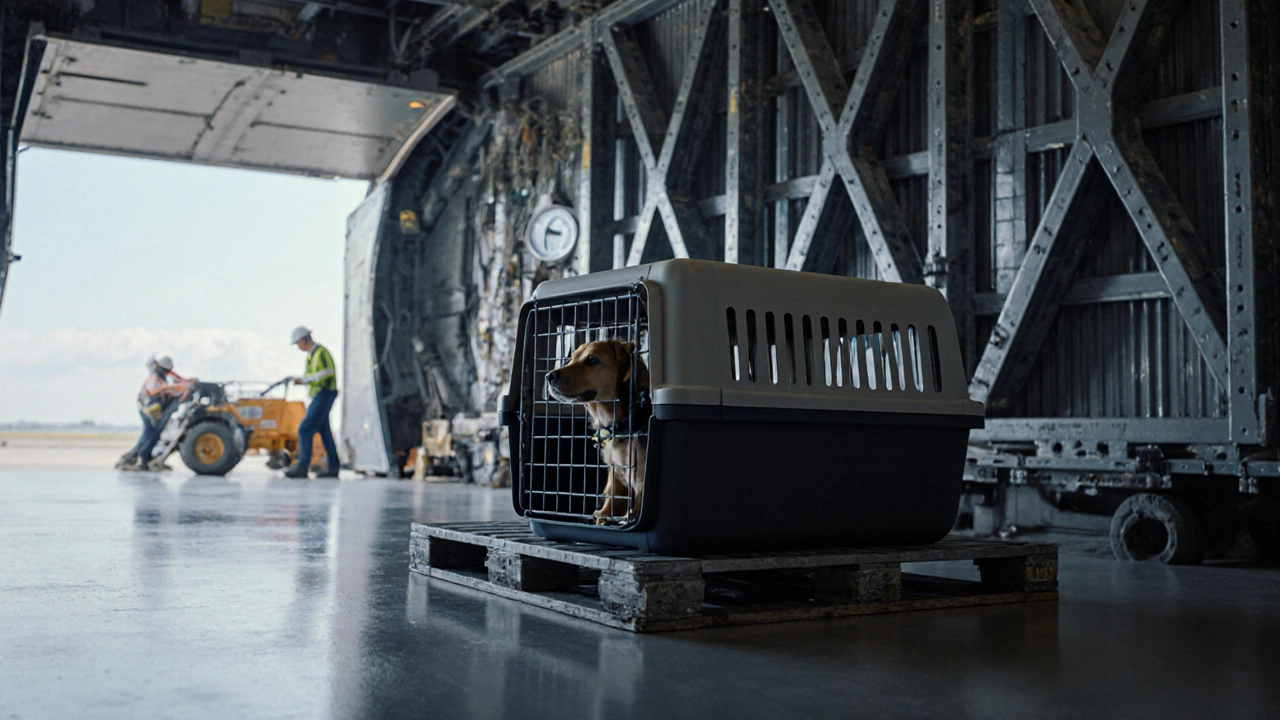Pet Travel Stress: Tips to Keep Your Dog Calm on Flights and Road Trips
When dealing with pet travel stress, the nervous feelings dogs experience during transport, whether by car, train, or plane. Also known as pet travel anxiety, it often shows up as panting, whining, or trying to escape the carrier. Pet travel stress isn’t just a mood swing; it’s a mix of fear of confinement, unfamiliar noises, and worry about being far from home. Understanding this mix helps you pick the right tools and plan a smoother journey.
Key Factors That Trigger Stress
Dog‑friendly airlines, air carriers that allow pets in the cabin and have clear pet policies play a huge role. When an airline’s rules are vague or fees are high, owners often feel pressured, which raises the dog’s anxiety. The second big factor is the pet carrier, the crate or bag used to transport a dog safely. A carrier that’s too big lets the dog move around and get scared; too small restricts breathing and causes panic. Finally, the need for an in‑flight dog bathroom, a way to manage a dog’s toilet needs during long flights can turn a routine trip into a stressful ordeal if you’re not prepared.
All three elements connect in a simple chain: Pet travel stress encompasses anxiety about airline policies, which requires a suitable carrier, and that carrier must accommodate bathroom breaks. Knowing this, you can break the chain by tackling each link. Start by checking the airline pet policy, the set of rules each airline has for cabin pets, including size limits and fees early in your planning. Look for airlines that list clear dimensions for under‑seat carriers and that allow a small potty pad or disposable travel litter. If the policy is pet‑friendly, the carrier choice becomes easier: pick a hard‑sided crate that matches the airline’s dimensions and adds a comfy blanket to calm your dog.
Next, focus on the bathroom issue. On long hauls, most dogs need at least one potty break. A good travel toilet accessory, like a disposable pee pad or a fold‑out potty mat designed for airplane seats can save you from a frantic scramble. Place the pad at the base of the carrier and let your dog sniff it before takeoff; the familiar scent signals it’s okay to use it when needed. Pair this with a pre‑flight bathroom run and a short walk to burn off excess energy, which reduces the chance of a bathroom emergency mid‑flight.
Preparation isn’t just about gear; it’s also about mental conditioning. A short “practice flight” at home—placing the carrier under a table, playing airport announcements, and rewarding calm behavior—helps your dog associate the carrier with safety rather than fear. Use high‑value treats and a soothing voice to reinforce a relaxed state. If your dog shows signs of severe anxiety, talk to a vet about natural calming aids like melatonin or a low‑dose pheromone spray; many owners find these tools effective without sedation.
Finally, build a comprehensive travel checklist, a step‑by‑step list of items and actions to ensure a stress‑free journey for pets. Include carrier dimensions, airline policy confirmation, pre‑flight potty break, travel toilet accessory, calming treats, and a copy of your pet’s health certificate. Checking each item off the list gives you confidence, and confidence translates to a calmer dog.
With the right airline, the proper carrier, a reliable bathroom solution, and a solid checklist, you’ll notice a drop in the nervous signals that usually signal pet travel stress. Below you’ll find articles that dive deeper into each of these topics, from fitting a 30‑lb dog under an airline seat to the best dog‑friendly airlines of 2025, and practical tips for managing in‑flight bathroom needs. Ready to turn a stressful trip into a smooth adventure? Keep reading.
Posted By Bryndle Redding On 18 Oct 2025 Comments (0)
Dog Cargo Flight: How Traumatic Is It Really?
Learn how stressful a dog cargo flight can be, spot signs of anxiety, and follow a detailed checklist to keep your pet safe and calm during air travel.
READ MORE